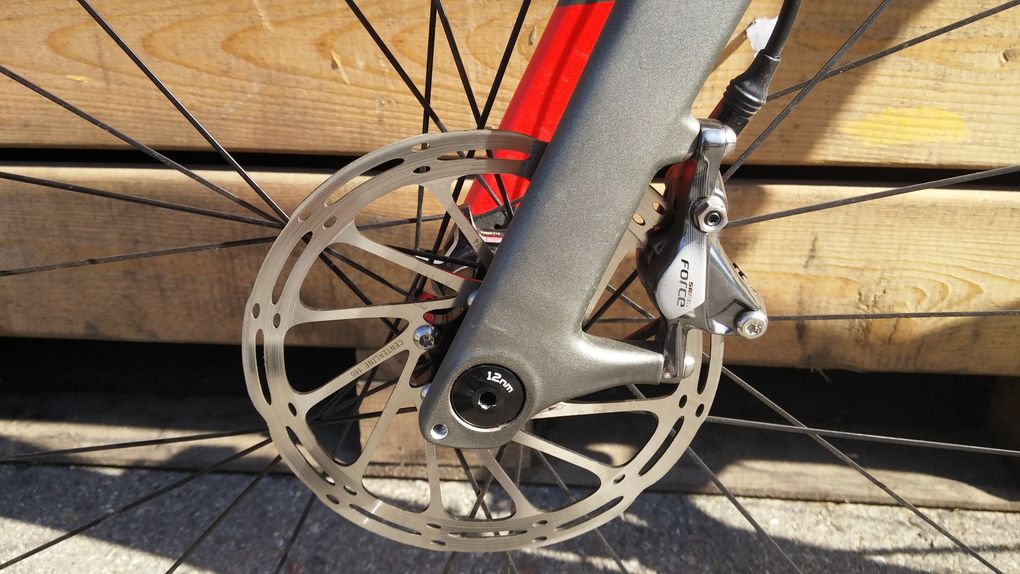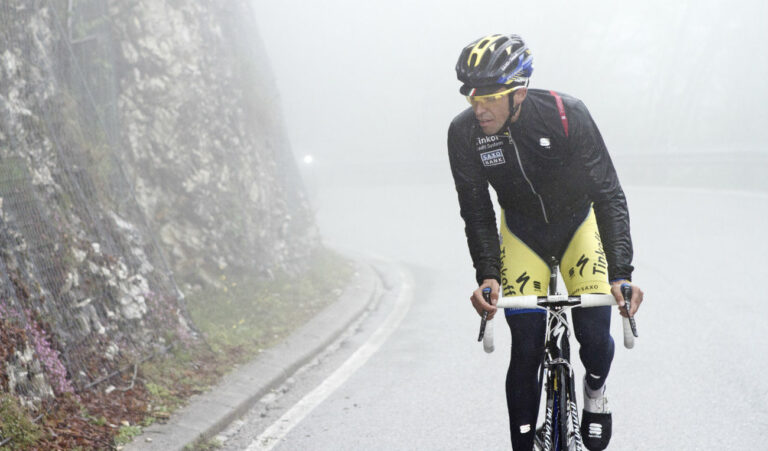SRAM’s new single-chainring road groupset, SRAM Force 1, is a step forward that takes things back to the old school. If that sounds like a paradox to you, then bear with me. Back in the early days of cycling bikes were all single chainring at the front, because there was no front derailleur. Or any derailleurs at all, come to think of it. It was a simpler time, but not necessarily an easier one because you weren’t exactly spoiled for choice when it came to changing gears.
And along came derailleurs and the rest is history. Except it’s not. In a reductionist turn of events, single chainring setups are making a comeback and SRAM’s latest 1X system (available in two versions: Force 1 and the more affordable Rival 1 setup) is evidence of this. Simply pick a front chainring size from a choice of 38, 40, 42, 44, 46, 48, 50, 52 or, if your feeling really confident, 54 teeth and pair it with one of their wide range 11-32t or 11-36t cassettes (go on, choose 54 with 11-23, we dare you). In fact, the long cage version of the rear derailleur will accept up to a 42t cassette. One other interesting thing to note about the rear mech is that is has a built-in clutch mechanism to ensure chain tension is maintained so there’s no derailleur bounce or chain slap – you don’t want to drop the chain, and this is a helpful addition to make sure that doesn’t happen,. along with the narrow-wide profile of the chainring.

But that’s the theory for the most part. With a nominal sized front chainring and a wide range cassette you should be able to tackle most things, albeit with slightly larger jumps in the cassette than you’re used to with a standard groupset. It simplifies things somewhat, removing front shifting altogether, and with it any mechanical or maintenance concerns.
Related reading: SRAM bring 1x groupset to the road
The other plus with 1X is that it comes with SRAM’s hydraulic disc brakes. Now there are plenty of people out there who’re still sceptical when it comes to discs, but SRAM’s system is good. And even though the shifter hood is significantly taller to accommodate the master cylinders, you won’t find yourself sitting there exasperated and uncomfortable on the bars as, in reality, you’re more likely to wrap your hand around the hood, rather than place it on top. What I really love about hydraulic braking isn’t really anything to do with braking power, it’s the fact that with hydraulic systems you get out a lot more than you put in so, proportionally, you’ll get a far greater reaction at the caliper for far less effort at the lever.

Riding Force 1 is actually quite liberating, as I found at the Eurobike demo day when testing Specialized’s gravel bike, the Diverge, equipped with the groupset. You’ll find the same slick exact actuation rear shifting that you’re used to if you’re already a SRAM devotee – and you won’t even realise you’re not using the standard Force 22 groupset there – the only difference is that there’s just no front shifting to worry about.
Occasionally you do notice a jump in the cassette, on one particular rise I felt I was spinning a bit to keep up and changed down a gear only to be met with slightly more resistance than I was anticipating. But none of those jumps are cripplingly large. Downhill is a similar thing. Spinning out isn’t really an issue until you’re going really rather quickly and, unless you’re racing, most people have stopped pedalling by that point anyway.

Ultimately, whether you warm to the 1X concept or not probably depends on what type of riding you tend towards. SRAM have never intended Force1 to replace the standard 2×11 setup on road bikes, but rather to provide another option for gravel, off-road, commuting, MTB and even triathlon (some of SRAM’s sponsored Ironman athletes have used the system), when, given the wide-ranging cassette, the front derailleur can be made redundant. Personally, I enjoyed riding it, and we’ll be getting in a groupset for a full test soon, so I’m keen to see how it fairs on roads I’m more familiar with, especially on certain rides where there’s more shifting required, and to see whether it’s a viable alternative to a typical double-ring setup.
Website: SRAM





